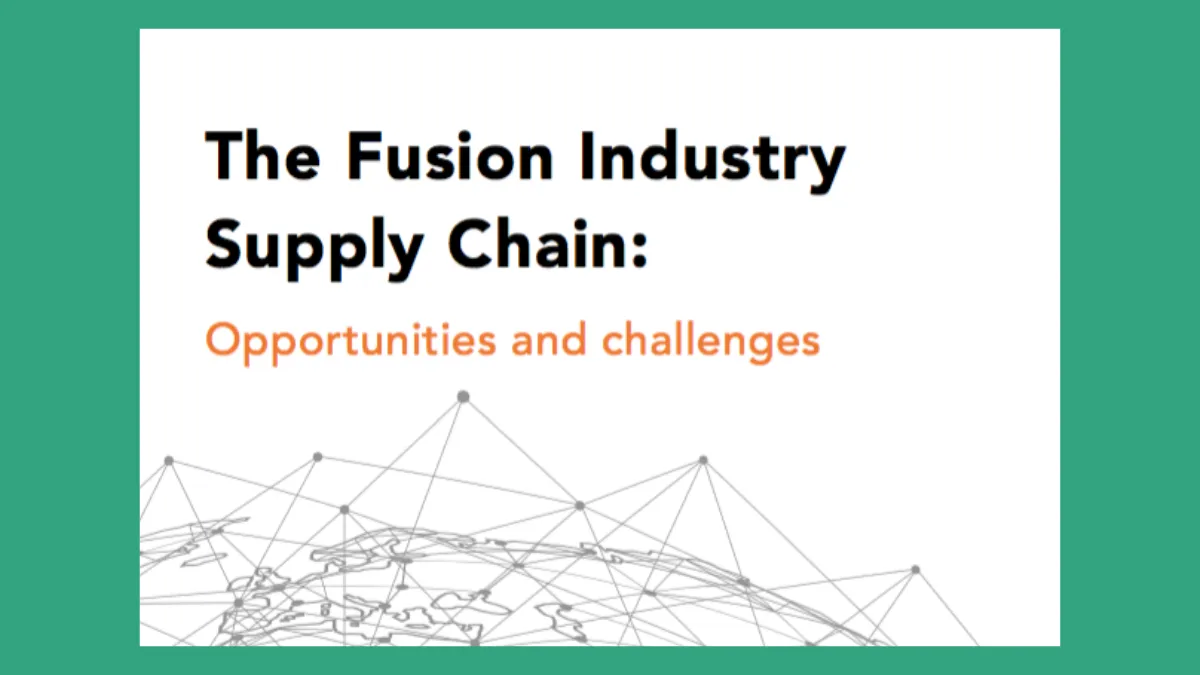Fusion industry could face supply chain ‘chicken-and-egg’ scenario – FIA Supply Chain Report insights
By Patrick O'Regan
In May 2023, the Fusion Industry Association released their 2023 supply chain report titled “The Fusion Industry Supply Chain: Opportunities and Challenges”. The report highlighted significant barriers within the supply chain but also made recommendations for how to move forward.
Here are 3 key insights from the report:
 1. The supply chain must step up to the promise of fusion
1. The supply chain must step up to the promise of fusion
The FIA’s report claims that the fusion energy supply chain costs an estimated $500 million today, which will rise sharply to $7 billion once the first of its kind plants are opened. This is a huge opportunity.
“Even if just a small number of FIA companies succeed at the level they hope for, we should anticipate many billions in supply chain opportunities over the next decade alone, and likely trillions in the coming decades,” said the report.
The three sources of the highest costs for fusion companies in 2022 were specialised components (e.g. vacuum pumps), raw materials and contract engineering.
The fusion industry is moving fast, and suppliers therefore need to be ready for such growth. Suppliers need to have the capacity to scale up to match what the FIA labels as a potential “trillion dollar” industry.

2. Ensuring supply is a ‘chicken-and-egg’ scenario
The report stresses that a chicken and egg scenario is developing between fusion companies and supply chains.
The report states that “To ensure fusion can scale, it will need suppliers to start building capacity and capability now. But suppliers and their investors are uncertain of when fusion will be ready. So, which comes first: the chicken (industry), or the egg (the supply chain)?”
For most suppliers (91%), fusion is perceived as a long-term prospect for them, whilst only 33% see fusion as a short-term gain. This has serious consequences on the depth of the supply chain. 81% of fusion firms reported either partly or solely assembling raw materials in-house. This poses a substantial challenge to fusion company’s attempts to scale up to the point of commercialisation.
Many suppliers also emphasised a need for greater networking and knowledge sharing opportunities between fusion companies and suppliers.
3. Increased funding, risk-sharing and networking between industry and suppliers will be imperative
The FIA, after consultation with both fusion and supply chain companies, have made a number of recommendations to address these challenges.
A common thread amongst both sectors was a need for increased funding from both the private and public sector. This would provide more certainty, security, and consistency, which would help incentivise supply chains to increase their capacity for production to match the needs of the fusion sector.
Other FIA recommendations include exploring risk-sharing mechanisms, building a global network of suppliers, and standardisation as the industry moves out of the lab and into commercialisation.
The opportunities for suppliers remain lucrative, according to the FIA. Fusion has the potential to become a trillion-dollar industry in the future, and by involving themselves early, suppliers stand to gain an advantage. Once fusion becomes locked into national energy grids, the demand for the necessary materials will rise sharply, and suppliers stand to benefit.
